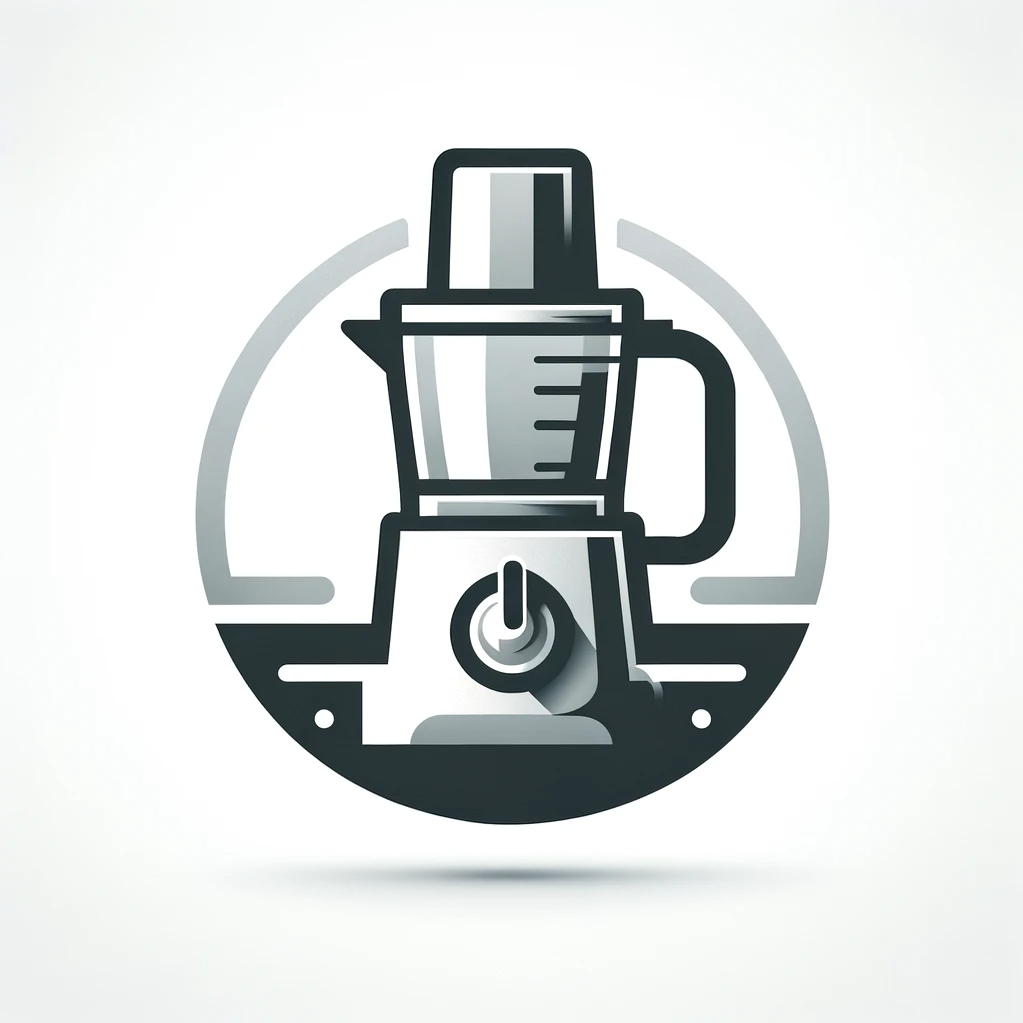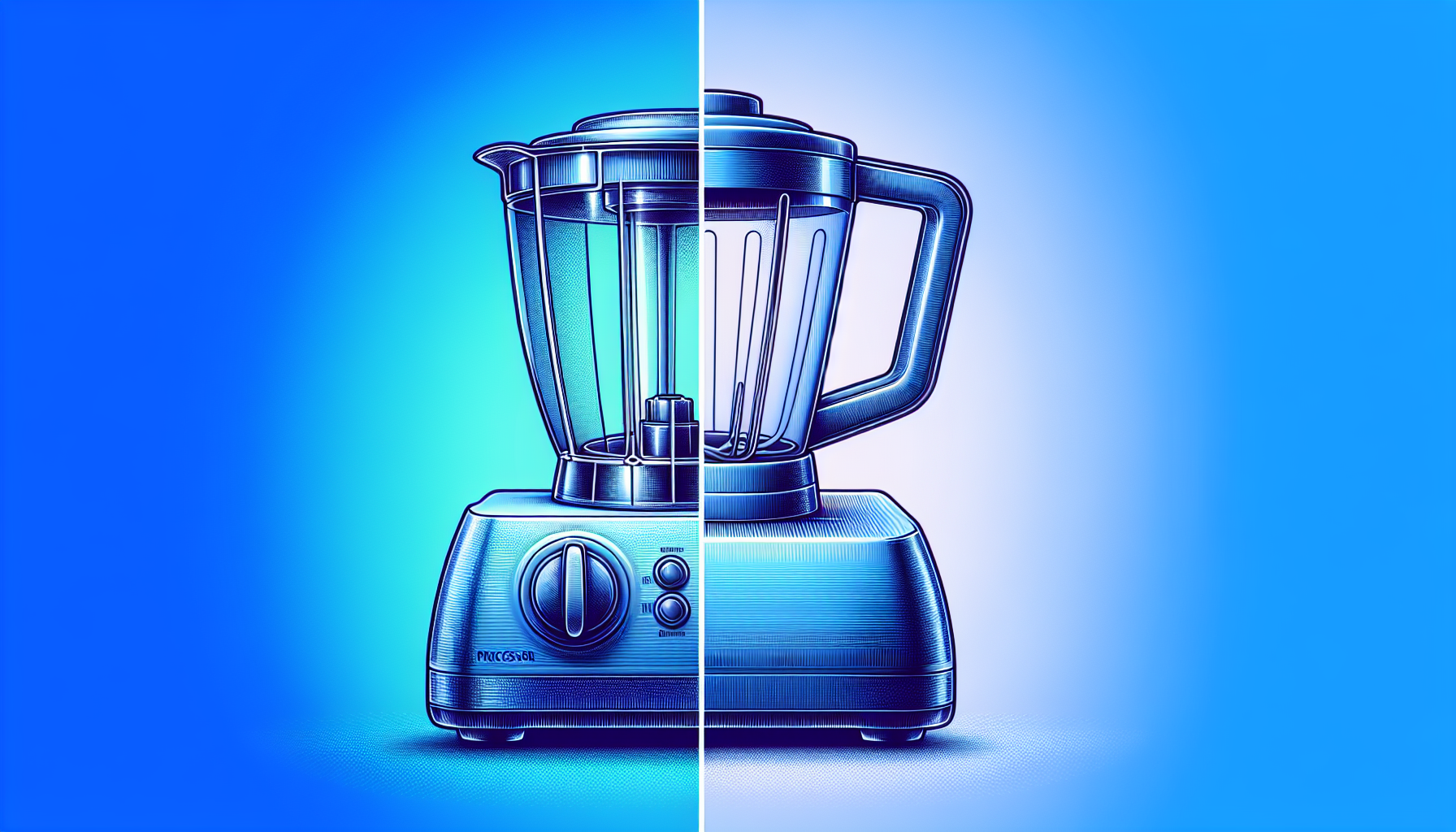Have you ever found yourself in a predicament where you desperately need a blender, but all you have at hand is a processor? The question arises: can a processor be used as a blender? In this article, we will explore the possibilities of utilizing a processor to fulfill your blending needs, and whether it can truly live up to the versatility and functionality of a dedicated blender. So, let’s dive in and find out if your trusty processor can handle the task of blending your favorite smoothies and soups!
CHECK OUT FOOD PROCESSORS AND VEGETABLE CHOPPERS ON AMAZON
What is a Processor?
Definition and Function
A processor is a versatile kitchen appliance that is used for a variety of culinary tasks. It is typically equipped with a motor and various attachments, allowing it to chop, slice, grate, mix, and puree ingredients. Processors are commonly used to prepare ingredients for cooking or baking, making tasks such as chopping vegetables or kneading dough much easier and more efficient.
CHECK OUT FOOD PROCESSORS AND VEGETABLE CHOPPERS ON AMAZON
What is a Blender?
Definition and Function
A blender, on the other hand, is a kitchen appliance specifically designed for blending and mixing ingredients. It comprises a motor connected to a rotating blade assembly at the bottom of a container. When activated, the blades quickly rotate, creating a vortex that seamlessly blends ingredients together. Blenders are commonly used for making smoothies, pureeing soups, or creating creamy sauces.
Differences Between a Processor and a Blender
Design and Construction
One of the primary differences between a processor and a blender lies in their design and construction. Processors often come with a wider base and a large capacity container, which allows for the processing of larger quantities of ingredients. In contrast, blenders generally have a more compact design with a narrower base and a smaller container, suitable for blending smaller portions of ingredients.
Power and Capacity
Processors tend to be more powerful than blenders, as they are designed to handle a wider range of tasks. They usually feature higher wattage motors and multiple speed settings, providing greater control and allowing for more precise processing. Additionally, processors typically have a larger capacity, enabling them to hold more ingredients at once.
Blending Techniques
Another significant difference between processors and blenders is the blending technique they employ. Processors use a combination of sharp blades and a pulsing motion to process ingredients. They are particularly efficient when it comes to chopping, slicing, or grating. Blenders, on the other hand, use the centrifugal force created by the rotating blades to create a vortex that blends ingredients smoothly. They excel at liquefying, pureeing, and creating smooth textures.
Using a Processor as a Blender
Advantages
While a processor is not specifically designed for blending, it can still be used for some blending tasks. One of the advantages of using a processor as a blender is its versatility. With a processor, you have the ability to perform a wide range of tasks beyond just blending. This means that you can use it for chopping, slicing, or grating before proceeding to blend your ingredients, all in one appliance.
Limitations
However, it is important to note that using a processor as a blender does have its limitations. Due to its design and blending technique, a processor may not achieve the same smooth and even consistency that a dedicated blender can offer. It may leave behind some chunks or uneven textures, especially when trying to blend harder or larger ingredients. Additionally, the wider base and larger capacity of a processor may not be ideal for blending smaller portions.
Tips and Techniques to Use a Processor as a Blender
Preparation
To achieve better blending results with a processor, proper preparation is essential. Start by cutting your ingredients into smaller pieces before adding them to the processor. This will ensure that the processor can handle the ingredients more effectively and reduce the chances of uneven blending. If you are blending harder or larger ingredients, consider pulsing them a few times before running the processor continuously to break them down gradually.
Blending Methods
When using a processor as a blender, it is important to choose the right blending method. If you are aiming for a smoother consistency, consider blending for longer periods of time, allowing the processor to work its way through the ingredients. You can also try adding liquid, such as water or juice, to improve the blending process. Additionally, using the pulse function on your processor can help achieve a more even blend by allowing you to control the blending intensity.
Recipes that can be made using a Processor as a Blender
Smoothies
Despite its limitations, a processor can still be used to make delicious and nutritious smoothies. Simply prepare your ingredients by cutting them into smaller pieces and adding them to the processor. Blend them for longer periods of time, adding liquid to achieve your desired consistency. You can experiment with various combinations of fruits, vegetables, yogurt, and juices to create your own personalized smoothie recipes.
Sauces and Dips
Processors are also great for making sauces and dips. Whether you want to whip up a creamy salad dressing, a tangy salsa, or a smooth hummus, a processor can get the job done. Just add the ingredients to the processor, blend them until smooth, and adjust the seasonings to taste. The processor’s sharp blades and pulsing motion will help ensure that your sauces and dips have a uniform texture.
Ground Spices and Flours
If you have a processor, you can also use it to grind your own spices and flours. Whether you are making a homemade spice blend or grinding whole grains into flour, the processor can be a handy tool. Simply add the spices or grains to the processor and blend them until they reach the desired consistency. This allows you to have more control over the flavors and textures of your ingredients, resulting in fresher and more flavorful dishes.
Maintenance and Cleaning for Processors Used as Blenders
Cleaning Tips
To maintain the cleanliness of your processor, it is important to clean it thoroughly after each use. Start by removing any attachments or blades from the processor. Wash them with warm, soapy water and a sponge or brush, making sure to remove any food residue. Wipe down the base of the processor with a damp cloth, paying special attention to any crevices or hard-to-reach areas. Finally, rinse all the parts and allow them to dry completely before reassembling the processor.
Maintenance Practices
In addition to regular cleaning, there are a few maintenance practices that can help prolong the lifespan of your processor. Always make sure to unplug the appliance before performing any maintenance or cleaning tasks. Avoid submerging the base of the processor in water and only wash the removable parts. Check the blades and attachments regularly for any signs of wear or damage and replace them if necessary. Following these practices will ensure that your processor stays in optimal condition.
Safety Precautions
Handling Hot Liquids
When using a processor as a blender, it is important to exercise caution when handling hot liquids. The processor’s wider base and larger capacity may make it more prone to spills or splatters. Make sure to allow hot liquids to cool down slightly before adding them to the processor. Additionally, use a towel or oven mitt to hold the lid firmly in place while blending hot liquids to prevent any accidents or burns.
Sharp Blades
Another safety consideration when using a processor as a blender is the sharpness of its blades. Always handle the blades with care and avoid placing your hands near them while the processor is in operation. When removing or cleaning the blades, take extra caution to prevent accidental cuts. If your processor comes with a blade cover or safety feature, make sure to use it to reduce the risk of injury.
Electrical Safety
Lastly, ensure that you follow proper electrical safety practices when using a processor as a blender. Always plug the appliance into a grounded outlet and avoid overloading the circuit by running multiple high-powered appliances simultaneously. Never immerse the base of the processor in water or expose it to moisture to prevent electrical shocks or damage to the appliance.
Conclusion
In conclusion, while a processor can be used as a blender, it is important to keep in mind its limitations and adjust your expectations accordingly. While a processor can handle some blending tasks, it may not achieve the same smooth consistency as a dedicated blender. However, with proper preparation and technique, you can still use a processor to make delicious smoothies, sauces, dips, and even grind your own spices and flours. Just remember to follow the recommended maintenance and cleaning practices, as well as the necessary safety precautions, to ensure a safe and enjoyable blending experience with your processor.

